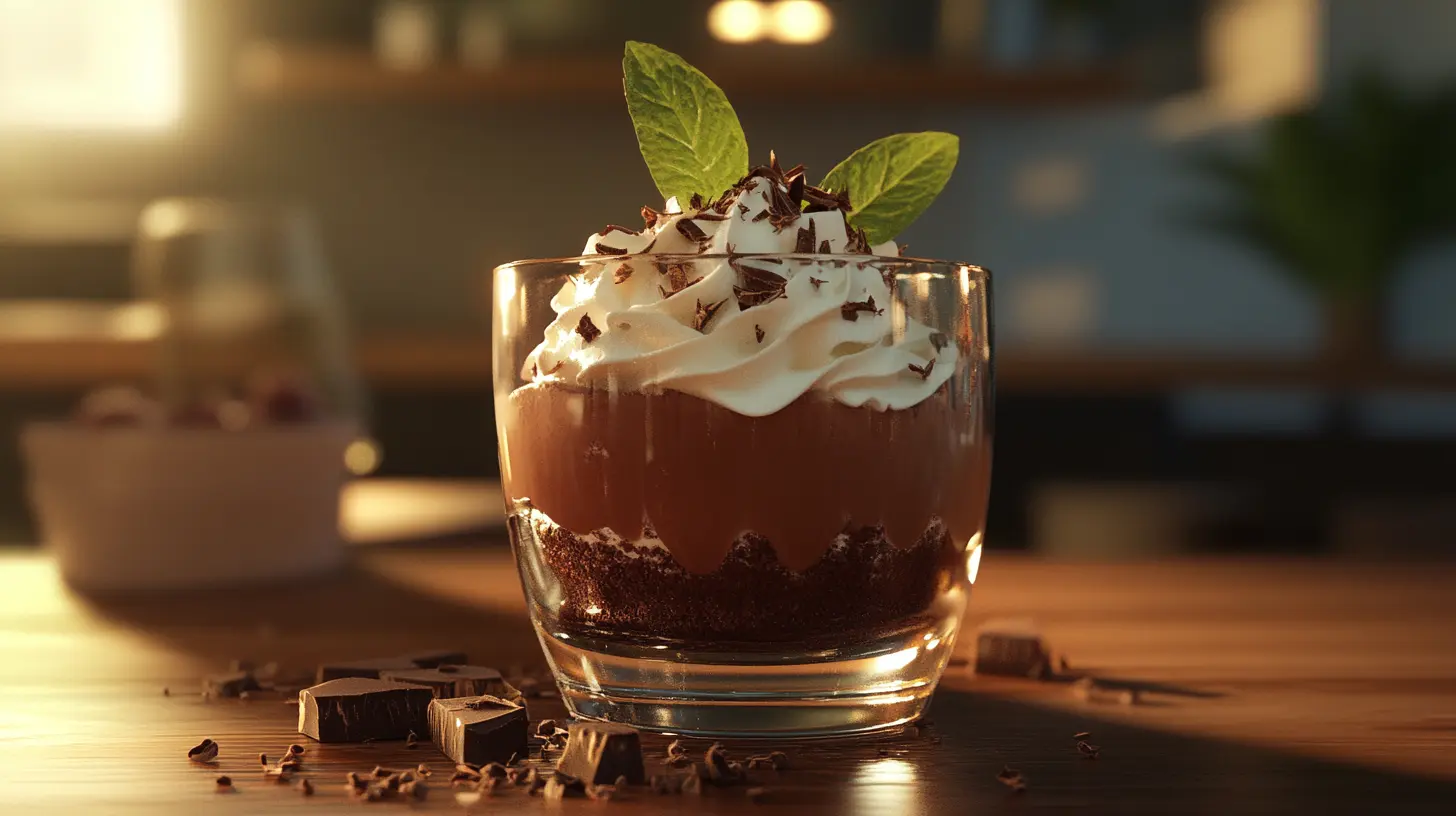When it comes to creating the perfect chocolate mousse, the type of chocolate you use can make all the difference. Chocolate mousse, a beloved dessert known for its creamy texture and rich flavor, relies on the quality of its ingredients to truly shine. Among these, the chocolate is undoubtedly the star of the show. Selecting the best chocolate for mousse isn’t just about grabbing the nearest chocolate bar—it’s about understanding what makes chocolate suitable for this delicate and decadent treat.
Whether you’re a seasoned pastry chef or a home cook looking to impress, this guide will help you take your mousse to the next level.
Table of Contents
What Makes a Chocolate Ideal for Mousse?
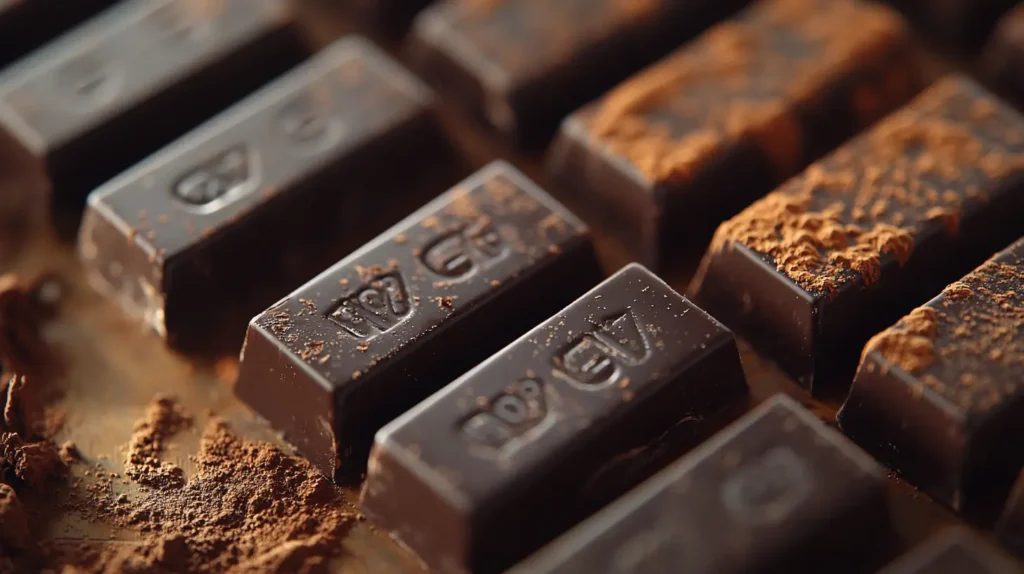
Creating a perfect chocolate mousse starts with choosing the right chocolate. Not all chocolates are made equal, and selecting the wrong type can lead to a mousse that’s too sweet, too bitter, or lacks the smooth texture this dessert is famous for. Below, we break down the key criteria to consider when selecting chocolate for your mousse masterpiece.
Cocoa Content and Quality
The cocoa content in chocolate determines its intensity, bitterness, and depth of flavor. For mousse, the general recommendation is to use chocolate with at least 70% cocoa. Here’s why:
- Rich Flavor: Higher cocoa content brings a robust chocolate flavor that balances the sweetness of mousse’s other ingredients, such as sugar and cream.
- Balanced Bitterness: While dark chocolate offers a pleasant bitterness, it doesn’t overpower the mousse’s creamy sweetness.
- Enhanced Texture: Quality chocolate with high cocoa content tends to melt better, ensuring a smoother mousse.
When shopping for chocolate, avoid overly processed options. Look for labels that highlight pure ingredients, like cocoa butter and cocoa solids, instead of artificial flavors or excessive sweeteners.
Texture and Consistency
Smooth and creamy chocolate ensures that the mousse has a velvety finish. Chocolates that contain grainy or gritty textures can ruin the consistency of the dessert. To achieve the best results:
- Opt for couverture chocolate, which is specifically designed for melting and blending. Its high cocoa butter content ensures a silky smooth texture.
- Avoid chocolates with too many stabilizers or emulsifiers, as these can affect how the chocolate melts and integrates with other ingredients.
Avoiding Additives and Fillers
Many mass-market chocolates contain additives like vegetable oils, fillers, or excessive sugar. While these may be fine for snacking, they can interfere with the mousse’s flavor and structure. Instead:
- Choose chocolates labeled as pure, organic, or artisanal to ensure they are free from unnecessary ingredients.
- Stay away from compound chocolates, which substitute cocoa butter with vegetable fats. Though cheaper, they lack the rich flavor and melting properties needed for mousse.
By focusing on cocoa content, smooth texture, and minimal additives, you’re well on your way to selecting the ideal chocolate for mousse.
Types of Best Chocolate for Mousse
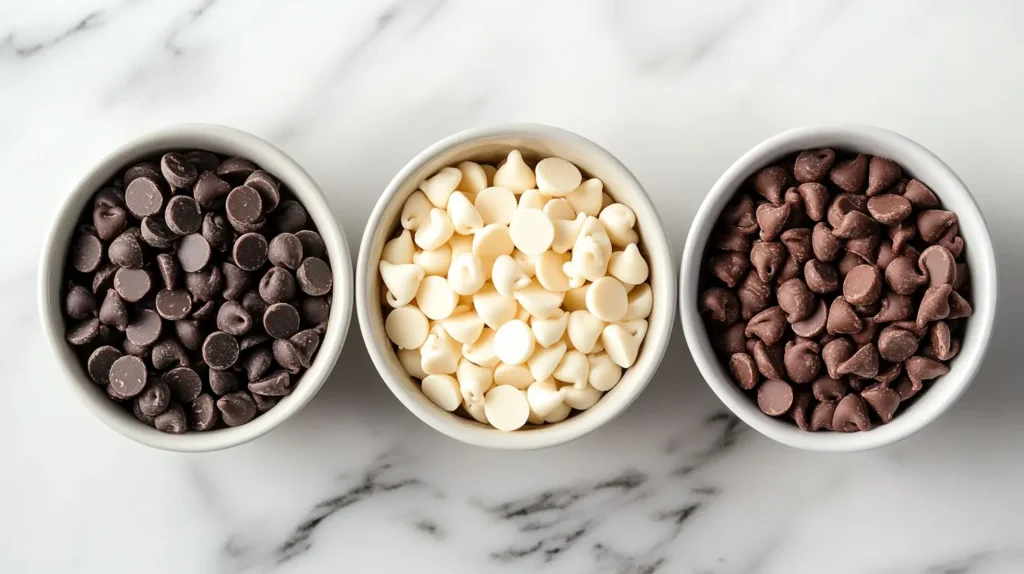
The type of chocolate you choose can dramatically influence the flavor, texture, and overall quality of your mousse. While dark chocolate is the most popular choice, milk chocolate and even white chocolate can be used creatively to craft unique variations of this classic dessert. Let’s take a closer look at these options.
Dark Chocolate
Dark chocolate is often considered the best choice for mousse because of its intense flavor and balanced bitterness. Here’s why it’s a top pick:
- Flavor Intensity: With a cocoa content of 70% or higher, dark chocolate offers a bold, rich flavor that pairs beautifully with mousse’s creamy base.
- Bitterness Balancing Sweetness: The natural bitterness of dark chocolate complements the sweetness of ingredients like sugar and whipped cream, resulting in a perfectly balanced dessert.
- Melting Properties: High-quality dark chocolate melts seamlessly, ensuring a smooth and creamy mousse texture.
Best Uses:
Dark chocolate mousse works wonderfully as a standalone dessert or as a base for flavor infusions like orange zest, espresso, or liqueurs such as Grand Marnier or Baileys.
Recommended Brands:
- Valrhona Guanaja 70%: Known for its exceptional quality and deep flavor profile.
- Lindt Excellence 70% or 85%: Readily available and reliable for mousse preparation.
- Ghirardelli Intense Dark 72%: Affordable with excellent melting properties.
Milk Chocolate
Milk chocolate offers a sweeter and creamier alternative to dark chocolate, ideal for those who prefer a less intense mousse. However, there are some nuances to keep in mind:
- Sweetness Levels: Milk chocolate contains more sugar and less cocoa than dark chocolate, so you may need to reduce added sweeteners in your mousse recipe.
- Creamy Texture: Its higher milk content creates a softer, more delicate mousse texture.
- Milder Flavor: While it lacks the boldness of dark chocolate, milk chocolate mousse can still be delightful, especially for younger audiences or those with a sweet tooth.
Best Uses:
Milk chocolate mousse pairs well with fruity toppings like strawberries or raspberries. It’s also an excellent choice for layered desserts like trifles or parfaits.
Recommended Brands:
- Cadbury Dairy Milk: Creamy and sweet, perfect for a light mousse.
- Guittard Milk Chocolate Chips: Excellent melting properties and a mild flavor.
- Green & Black’s Organic Milk Chocolate: A balanced option with quality ingredients.
White Chocolate
White chocolate, though not technically chocolate (as it lacks cocoa solids), can be a fantastic choice for mousse when used creatively. Here’s why:
- Sweet and Subtle Flavor: White chocolate has a delicate sweetness that allows other flavors, such as vanilla or citrus, to shine.
- Unique Texture: Its creamy nature creates a luscious mousse that feels indulgent and luxurious.
- Versatility: White chocolate mousse can be tinted with natural food colors or layered with dark chocolate mousse for a stunning visual effect.
Best Uses:
White chocolate mousse is ideal for incorporating fruit purees like passion fruit, mango, or raspberry. It’s also a great canvas for experimenting with floral notes like lavender or rose.
Recommended Brands:
- Valrhona Ivoire 35%: A premium white chocolate that melts beautifully and has a balanced sweetness.
- Ghirardelli Classic White Chips: Easy to use and widely available.
- Callebaut White Chocolate 28%: Known for its high cocoa butter content and smooth texture.
Comparing the Three Types
| Type | Cocoa Content | Sweetness | Best For |
|---|---|---|---|
| Dark Chocolate | 70%+ | Balanced | Classic mousse, intense flavors |
| Milk Chocolate | 30-50% | Sweet | Fruity pairings, layered desserts |
| White Chocolate | 0% (cocoa butter) | Very Sweet | Fruity or floral mousses, visual appeal |
With these types of chocolate, you can craft a mousse that caters to every palate and occasion.
Best Chocolate Brands for Mousse
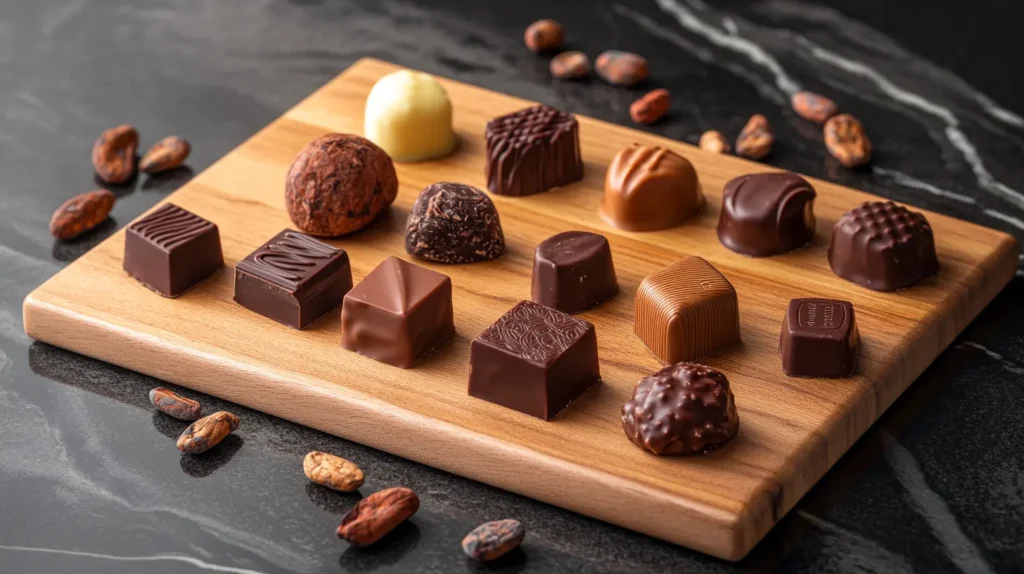
Choosing the right brand of chocolate can elevate your mousse from good to exceptional. High-quality chocolate not only ensures a rich and smooth texture but also guarantees consistent results in every batch. Below are some of the best chocolate brands to consider, categorized by their quality, price range, and specific uses.
Premium Dark Chocolate Brands
For those aiming to create a decadent and sophisticated chocolate mousse, premium dark chocolates are an excellent choice. These chocolates are made with high cocoa content and superior craftsmanship.
Top Picks:
- Valrhona Guanaja 70%
- Why It’s Great: This French chocolate is celebrated for its deep, intense flavor with subtle fruity notes.
- Best Use: Perfect for mousse recipes that require a bold and complex chocolate profile.
- Where to Find: Available in specialty baking stores and online retailers.
- Lindt Excellence 70% or 85%
- Why It’s Great: Easily accessible and consistently high in quality, Lindt’s Excellence range offers smooth texture and balanced bitterness.
- Best Use: Ideal for both beginners and experienced bakers.
- Guittard Bittersweet Chocolate 70%
- Why It’s Great: Known for its velvety finish and rich cocoa taste, Guittard provides a professional-grade option for mousse enthusiasts.
- Best Use: Best for gourmet mousse recipes requiring deep chocolate intensity.
Budget-Friendly Chocolate Options
Not all great mousses require premium-priced chocolate. Many affordable options provide excellent flavor and texture, perfect for casual baking or those on a budget.
Top Picks:
- Ghirardelli Baking Chocolate 72%
- Why It’s Great: Widely available and reasonably priced, Ghirardelli offers high-quality chocolate suitable for mousse.
- Best Use: A dependable option for everyday mousse recipes.
- Baker’s Semi-Sweet Chocolate Squares
- Why It’s Great: Affordable and versatile, Baker’s chocolate melts well and provides a rich flavor.
- Best Use: Great for beginner-level mousse preparations.
- Callebaut Dark Chocolate 54.5%
- Why It’s Great: While slightly lower in cocoa content, Callebaut is affordable, smooth, and easy to work with.
- Best Use: Suitable for milkier or sweeter mousse varieties.
Specialty Chocolate Options
For those with specific dietary preferences or seeking unique flavors, specialty chocolates are a perfect fit. These options include vegan, organic, and artisanal chocolates.
Top Picks:
- Green & Black’s Organic Dark Chocolate
- Why It’s Great: Certified organic and made with ethically sourced ingredients, it offers an earthy and natural chocolate flavor.
- Best Use: Best for mousse recipes highlighting sustainability or incorporating natural ingredients.
- Hu Kitchen Simple Dark Chocolate
- Why It’s Great: Vegan and paleo-friendly, this chocolate is free of refined sugars, dairy, and soy.
- Best Use: Ideal for health-conscious mousse variations or vegan desserts.
- Scharffen Berger 70% Bittersweet Chocolate
- Why It’s Great: Known for its distinct fruity and nutty notes, Scharffen Berger adds depth to any mousse recipe.
- Best Use: Perfect for creating mousse with a gourmet twist.
Quick Comparison of Chocolate Brands
| Brand | Cocoa Content | Category | Best For |
|---|---|---|---|
| Valrhona Guanaja | 70% | Premium | High-end, intensely flavored mousses |
| Lindt Excellence | 70-85% | Premium | Versatile, easily accessible mousses |
| Ghirardelli | 72% | Budget-Friendly | Everyday use with consistent quality |
| Green & Black’s Organic | 70% | Specialty | Ethical and organic mousse recipes |
| Hu Kitchen Simple Dark | 70% | Specialty | Vegan, health-conscious mousse recipes |
By selecting a chocolate brand that aligns with your recipe’s goals and your personal preferences, you can craft a mousse that tastes as incredible as it looks.
Tips for Preparing Mousse with Chocolate
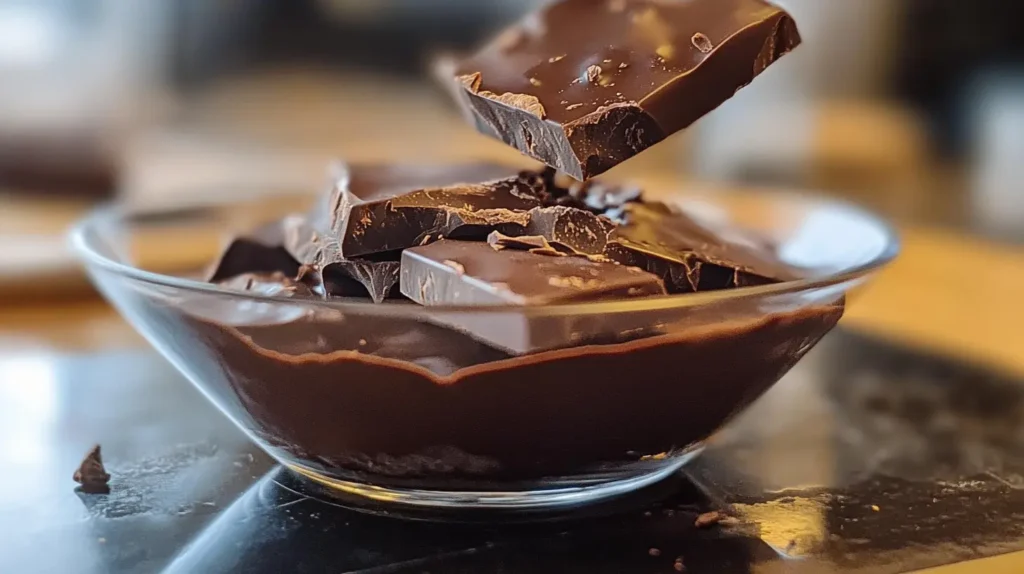
Creating the perfect chocolate mousse requires more than just high-quality ingredients—it also depends on using the right techniques. Proper preparation ensures that the mousse is smooth, airy, and packed with flavor. Below are some essential tips to help you master the art of preparing mousse with chocolate.
Melting Chocolate Properly
The way you melt chocolate plays a critical role in achieving the right texture and consistency for mousse. Here’s how to do it correctly:
Double Boiler Method:
- Use a heatproof bowl placed over a pot of simmering water.
- Ensure the bottom of the bowl doesn’t touch the water to prevent overheating.
- Stir the chocolate constantly until smooth and fully melted.
Microwave Method:
- Chop the chocolate into small, even pieces for consistent melting.
- Heat in short intervals (15-20 seconds), stirring in between to prevent scorching.
Pro Tip:
Avoid letting any water come into contact with the chocolate, as this can cause it to seize and become grainy.
Pairing Chocolate with Other Ingredients
Chocolate mousse relies on a harmonious combination of ingredients to achieve its signature flavor and texture. Pair your chocolate with care:
- Cream:
- Use heavy whipping cream with a fat content of at least 35% for a rich and stable mousse.
- Whip the cream to soft peaks to maintain the mousse’s airy structure.
- Eggs:
- Whipped egg whites add volume and lightness to the mousse.
- Use fresh, room-temperature eggs for the best results.
- Sweeteners:
- Balance the sweetness of the mousse based on your chocolate type.
- Dark chocolate may require more sugar, while milk chocolate might need less.
- Flavor Enhancers:
- Add a pinch of salt to intensify the chocolate flavor.
- Incorporate a splash of vanilla extract, espresso, or liqueur for depth.
Experimenting with Flavors
One of the joys of making chocolate mousse is experimenting with flavors to create something unique. Here are some ideas to inspire you:
Coffee or Espresso:
Adding a shot of espresso or a teaspoon of instant coffee granules enhances the chocolate’s bitterness and adds complexity.
Liqueurs:
Popular options include:
- Grand Marnier: Adds a hint of orange.
- Amaretto: Contributes almond notes.
- Kahlúa: Perfect for a mocha-inspired mousse.
Spices:
Cinnamon, chili powder, or cardamom can add an unexpected and delightful twist.
Fruits:
Fold in fruit purees like raspberry or passion fruit for a refreshing contrast to the rich chocolate.
Balancing Texture and Consistency
Achieving the right texture for mousse is all about balance. Follow these tips for consistency perfection:
- Fold, Don’t Stir:
When combining whipped cream or egg whites with melted chocolate, use a folding motion to preserve airiness. Overmixing can deflate the mousse. - Chill for Stability:
Let the mousse set in the refrigerator for at least 4 hours to firm up and allow the flavors to meld. - Layer Creatively:
For an elegant presentation, layer your mousse with complementary ingredients like crushed cookies, fruit, or whipped cream.
With these preparation tips, you can elevate your chocolate mousse from good to spectacular.
FAQs
Can I use chocolate chips for mousse?
Yes, chocolate chips can be used for mousse, but there are some considerations to keep in mind. Most chocolate chips are designed to hold their shape during baking, meaning they may contain stabilizers that can affect melting. While they are convenient, they may not melt as smoothly as high-quality baking chocolate.
Tips for Using Chocolate Chips in Mousse:
- Use premium brands like Ghirardelli or Guittard, which have fewer additives and better flavor.
- Melt the chips slowly over low heat to avoid burning or graininess.
- Consider adding a small amount of butter or cream to improve the melting process.
What’s the difference between couverture and compound chocolate?
Couverture Chocolate:
- High cocoa butter content (at least 31%).
- Known for its smooth texture and glossy finish.
- Ideal for mousse due to its superior melting properties and rich flavor.
Compound Chocolate:
- Made with vegetable fats instead of cocoa butter.
- Often cheaper but lacks the authentic chocolate flavor.
- Not recommended for mousse because it doesn’t melt as smoothly and can result in a waxy texture.
When making mousse, always opt for couverture chocolate for the best results.
Can I use vegan chocolate for mousse?
Absolutely! Vegan chocolate is a fantastic option for those following a plant-based diet. Look for chocolates labeled as dairy-free or vegan, which are often made with cocoa butter instead of milk solids.
Tips for Vegan Mousse:
- Replace heavy cream with coconut cream or whipped aquafaba (chickpea water).
- Use vegan sweeteners like maple syrup or agave if needed.
- Brands like Hu Kitchen and Endangered Species Chocolate offer excellent vegan options.
Is it necessary to temper chocolate for mousse?
No, tempering chocolate is not necessary for making mousse. Tempering is a process used to give chocolate a shiny appearance and a snap, typically for candies or coatings. Since mousse involves melting chocolate and combining it with other ingredients, tempering is unnecessary.
Important Note:
Focus on proper melting techniques to ensure the chocolate incorporates smoothly into the mousse without seizing or clumping.
What’s the best ratio of chocolate to cream?
The ideal ratio of chocolate to cream depends on the type of mousse you’re making:
- Dark Chocolate Mousse: Use 2:1 (chocolate: cream) for a rich and dense texture.
- Milk or White Chocolate Mousse: Use 1.5:1 (chocolate: cream) as these chocolates are softer and sweeter.
Additional Tips:
- Adjust the ratio slightly if incorporating egg whites or additional liquids like liqueurs.
- Always test a small batch to ensure the texture meets your preference.
How long does chocolate mousse last in the fridge?
Chocolate mousse can be stored in the refrigerator for up to 3-4 days, provided it’s kept in an airtight container.
Storage Tips:
- Cover the mousse tightly with plastic wrap to prevent it from absorbing odors.
- Serve chilled directly from the fridge for the best consistency.
By addressing these common questions, you’ll have all the knowledge you need to make and store a perfect chocolate mousse.
To enhance the user experience, incorporate the following internal links:
- Explore unique chocolate recipes like Dubai Chocolate Bar Recipe for innovative dessert inspirations.
- Learn about the ingredients in premium chocolate with our Nestle Chocolate Chip Cookie Recipe.
- Master melting techniques for desserts by visiting How to Melt Chocolate for Baking.
- For other classic dessert recipes, check out our Brookie Recipe.
Conclusion
Creating the perfect chocolate mousse starts with selecting the best chocolate, as it serves as the foundation for flavor and texture. Whether you prefer the boldness of dark chocolate, the creaminess of milk chocolate, or the subtle sweetness of white chocolate, each type can transform your mousse into a unique and delicious dessert.
High-quality chocolate brands such as Valrhona, Lindt, and Ghirardelli offer exceptional options for premium mousses, while budget-friendly and specialty chocolates like Green & Black’s or Hu Kitchen cater to specific dietary preferences and creative recipes. By following proper preparation techniques—such as melting chocolate carefully, pairing it with complementary ingredients, and folding gently to preserve airiness—you can achieve a mousse that’s rich, velvety, and irresistibly indulgent.
Whether you’re crafting a classic dark chocolate mousse or experimenting with fruity, nutty, or spiced variations, this dessert offers endless possibilities. Armed with the tips, recommendations, and knowledge from this guide, you’re ready to create a mousse that will impress at any occasion. Now, it’s time to grab your favorite chocolate and start whisking!

